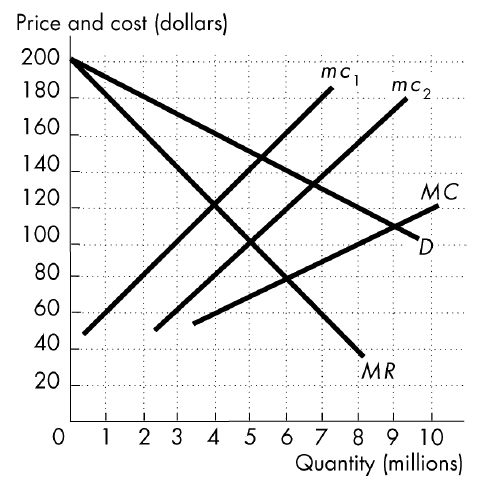Assume that the expectation of a recession next year causes business investments and household consumption to fall, as well as the financing to support it. If the nation has low mobility international capital markets and a fixed exchange rate system, what happens to the quantity of real loanable funds per time period and the monetary base in the context of the Three-Sector-Model?
a. The quantity of real loanable funds rises and monetary base rises.
b. The quantity of real loanable funds falls and monetary base rises.
c. The quantity of real loanable funds falls and monetary base falls.
d. The quantity of real loanable funds and monetary base remain the same.
e. There is not enough information to determine what happens to these two macroeconomic variables.
.B
You might also like to view...
If there are 1,000 identical rice farmers who are each willing to supply 200 bushels of rice at $2 per bushel, what price and quantity combination is a point on the market supply curve for rice?
A) $2 and 200 bushels B) $2 and 200,000 bushels C) $2,000 and 200,000 bushels D) $2,000 and 1,000 bushels E) $2 and 1,000 farmers
In the example of the Nike running shoe, we see that
A) selling costs account for over half of a shoe's retail price. B) materials actually account for two-thirds of the retail price of the shoes. C) taxes account for one-quarter of the retail price of the shoes. D) production costs exceed selling costs by a wide margin. E) raw materials costs are by far the largest component of the total costs of producing the shoes.
The figure below shows a firm that has two plants. Plant 1 has a marginal cost curve of mc1, plant 2 has a marginal cost curve of mc2, and the overall marginal cost curve is MC. Managers maximize their profit by producing ________ units at plant 1 and ________ units at plant 2.

A) 2 million; 4 million
B) 0; 5 million
C) 4 million; 5 million
D) None of the above answers is correct.
Demand for a good will always increase when
a. the price of a complementary good falls b. the price of a substitute good falls c. tastes change d. incomes decrease e. the price of the good falls